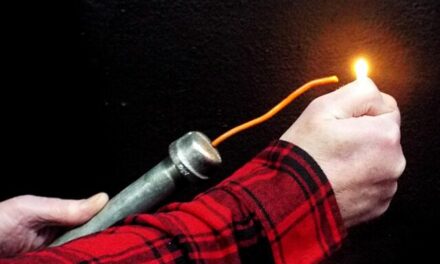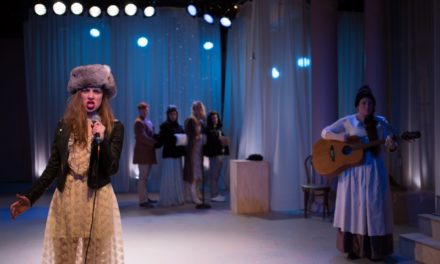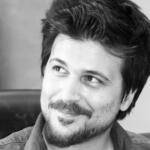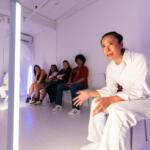Staged in the round with fewer than 25 people in a white box that feels like a gallery space, The Employees feels like a space-age journey that leaves one with many more questions than answers. Billed as “a workplace novel of the 22nd century,” four actors recite for the purpose of creating a type of live journal about work.
While stories of employment generally take place in an office space, The Employees is set on a ship. Evoking a netherworld of continued ambition with task action, the experience that the actors are living through is like Scientology taken to year 3000. Their speech pattern is slow and metered. While they don’t seem to be operating in a brainwashed state filled with forced conversation, there is something detached about their story that includes humanoids, who are not ready to “be them” yet.
Actors Paul Budraitis, Molly Leland, Christopher McLinden, and Aurea Tomeski speak to connect, and to place themselves in time with one another. They believe in themselves and what they see. One of the most compelling monologues was delivered by Christopher McLinden, who spoke of his great attraction to a humanoid with red hair. Moved by someone at a distance, he realized that he could not be near. As he looked ahead, there is the fear of death and of not finding connection in the future.
Text from the play includes chilling passages about the human condition:
“All the humans are dead now. And you’re dead too. Your bodies are lying there. For although
you were humanoid, you too were human in a sense, or at least you were allocated bodies
of the highest quality, the newest versions, meaning that you perished within minutes of the
biotermination. The more exclusive the update, the quicker the death. That’s why those of us
who belong to the early generations, who are less refined, die only slowly.”– The Employees
by Olga Ravn, translated by Martin Aitken
adapted by Jaclyn Biskup and Lauren Holmes
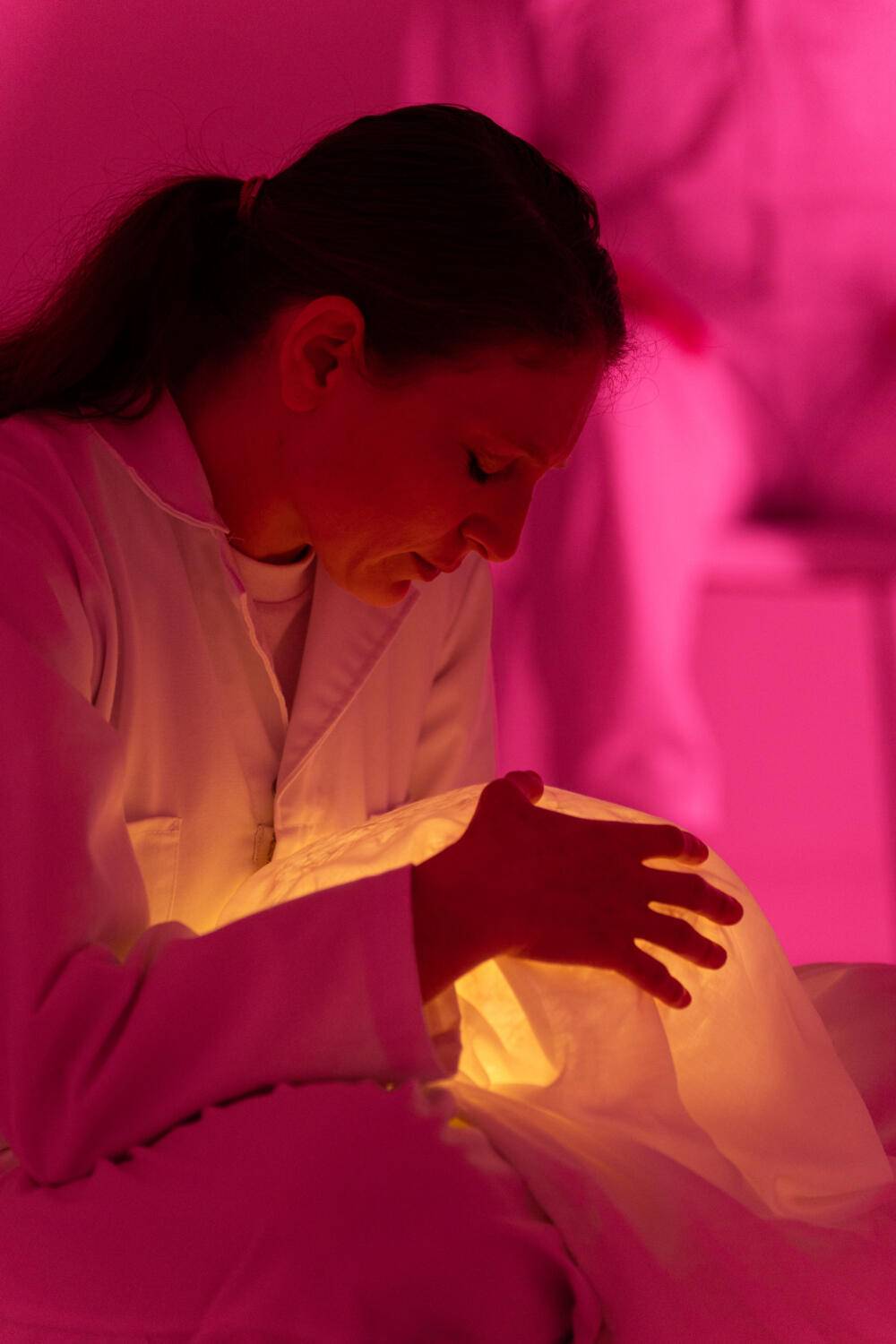
Photo by Pelenguino Photo.
Minimal sound, designed by Sabina Mariam Ali, echoes in the background. The light display leaves the viewer in awe, playing on the mood of the moment. Changes in light, designed by Jackie Fox, keep the audience engaged. One strobe sequence sets broken motion into a cataclysmic, new world.
Attraction and repulsion create the greatest opportunities for drama. In an almost completely white room, there is a glowing, lit object in the center. It is the only set piece, and it allows the actors to place themselves in dynamic juxtaposition to something. A great delight exudes from grasping the object, and one has to wonder if their world is so spare and sterile that no possessions really exist. I had to ask myself – if no possessions exist, what are they all working for?
Objectification is weighed a bit differently than commodification. Against a Capitalist notion that work produces money and with money we purchase goods, The Employees puts us in a room that places interpersonal relationships above task action. If you’re looking for a rant about social structures reimagined for the future, this isn’t it exactly. Nothing in the play winks at tiered structure, the role of the supervisor, or the importance of advancement through professional practice.
Instead, The Employees, as a space-age drama, is both fascinating and frightening. Director Jaclyn Biskup is glad to leave us in a plaintive wonder, rather than create a playing field of explanations to make the elusive obvious.
The Employees is playing for a limited engagement from June 13 -30 at Theaterlab, located at 357 W. 36th Street in NYC.
This post was written by the author in their personal capacity.The opinions expressed in this article are the author’s own and do not reflect the view of The Theatre Times, their staff or collaborators.
This post was written by Marcina Zaccaria.
The views expressed here belong to the author and do not necessarily reflect our views and opinions.



